
The Picture of Dorian Gray is a philosophical novel by Irish writer Oscar Wilde. A shorter novella-length version was published in the July 1890 issue of the American periodical Lippincott's Monthly Magazine. The novel-length version was published in April 1891.

Where the Heart Is is a 2000 American romantic drama film directed by Matt Williams and starring Natalie Portman, Stockard Channing, Ashley Judd, and Joan Cusack with supporting roles by James Frain, Dylan Bruno, Keith David, and Sally Field. The screenplay, written by Lowell Ganz and Babaloo Mandel, is based on the best-selling 1995 novel of the same name by Billie Letts. The film follows five years in the life of Novalee Nation, a pregnant 17-year-old who is abandoned by her boyfriend at a Walmart in a small Oklahoma town. She secretly moves into the store, where she eventually gives birth to her baby, which attracts media attention. With the help of friends, she makes a new life for herself in the town.
John Knowles was an American novelist best known for A Separate Peace (1959).
Section 8 was a category of discharge from the United States military, used for a service member judged mentally unfit for service. Section 8 was also often given to cross-dressers, gay, lesbian, bisexual and transgender people.

A Lost Lady is a 1923 novel by American writer Willa Cather. It tells the story of Marian Forrester and her husband, Captain Daniel Forrester, who live in the Western town of Sweet Water along the Transcontinental Railroad. Throughout the story, Marian—a wealthy married socialite—is pursued by a variety of suitors and her social decline mirrors the end of the American frontier. The work had a significant influence on F. Scott Fitzgerald's 1925 novel, The Great Gatsby.
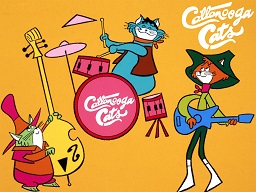
Cattanooga Cats is an American animated television series produced by Hanna-Barbera which aired on ABC from September 6, 1969, to September 4, 1971.

The Wars is a 1977 novel by Timothy Findley that follows Robert Ross, a nineteen-year-old Canadian who enlists in World War I after the death of his beloved older sister in an attempt to escape both his grief and the social norms of oppressive Edwardian society. Drawn into the madness of war, Ross commits "a last desperate act to declare his commitment to life in the midst of death." Years later, a historian tries to piece together how he came to commit this act, interviewing the various people Ross interacted with.

Peace Breaks Out (1981) is a novel by American author John Knowles, better known for A Separate Peace (1959). Both books share the setting of the Devon preparatory school.

Savage Nights is a 1992 French drama film directed and written by Cyril Collard. It stars Collard, Romane Bohringer, and Carlos López. The film is an adaptation of Collard's semi-autobiographical novel Les Nuits Fauves, published in 1989. It won four César Awards, including Best Film.
The Devon School is a fictional school created by author John Knowles in the novels A Separate Peace and Peace Breaks Out. It is based on Knowles' alma mater, Phillips Exeter Academy. Like Phillips Exeter during World War II, Devon is a boys' boarding school in New Hampshire. Knowles places the school in a town that bears its name, specifically at the head of a quaint residential street called Gilman Street. The school "emerged naturally from the town which had produced it." A Separate Peace covers the summer of 1942 and the Winter Session of 1942-1943. The senior year students are being prepared for the war. The timeframe in Peace Breaks Out is 1945-1946. In both of these books, Devon is portrayed as a boys' preparatory school, just as Phillips Exeter was at the time; although Phillips Exeter is today a co-educational school. The Devon School is one of the most prominent fictional examples of a total institution.

The Woman in Red is a 1935 American drama film directed by Robert Florey and starring Barbara Stanwyck and Gene Raymond. Based on the novel North Shore by Wallace Irwin, the film is about a woman equestrian who meets and falls in love with a traveling polo player from a once wealthy family. After they are married, she is persuaded to entertain her friend's wealthy client aboard a yacht. The client accidentally drowns, and her friend is arrested for his murder. Determined to keep her name out of the press, the friend does not reveal that he has a witness who can prove his innocence.

"Rollercoaster" is the first episode of the American animated musical-comedy television series Phineas and Ferb. The episode was originally broadcast on Disney Channel in the United States on August 17, 2007 as a preview of the series. The episode follows series protagonists Phineas and Ferb building an extremely large roller coaster starting in their backyard and going throughout the city.
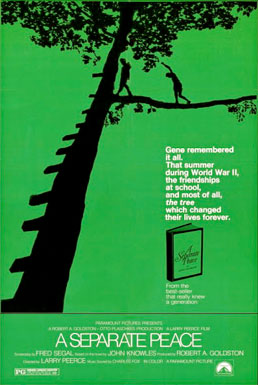
A Separate Peace is a 1972 American drama film directed by Larry Peerce. It was adapted by John Knowles and Fred Segal from Knowles's best-selling novel, about the conflicted friendship of two boarding-school students. The film stars Parker Stevenson and John Heyl.
David Low Hackett was an American official.

Peace is a 1975 psychological fantasy/ghost story novel by American writer Gene Wolfe. It is the story of a man from a small Midwestern town in the early to mid-20th century, Alden Dennis Weer, who narrates various memories from different parts of his life, including his childhood, early adulthood, and middle to old age.

The Barber and Winters families are fictional characters and families on the CBS Daytime soap operas The Young and the Restless and The Bold and the Beautiful. Introduced by the series creator, William J. Bell in 1990 and 1991, respectively, the Barber and Winters family are the only core African American families within the series. Sisters Drucilla and Olivia Barber were known for their ongoing romantic relationships with brothers, Neil and Malcolm Winters. The family is currently represented by patriarch, Neil, "his" daughter, Lily Ashby, and his adopted son, Devon Hamilton. In 2011, The Bold and the Beautiful connected Justin Barber, and his son Marcus Forrester to the Barber family of Genoa City.
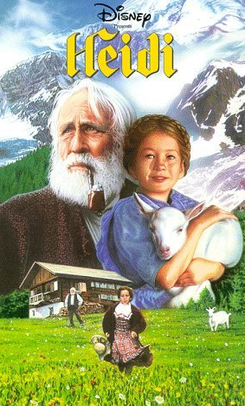
Heidi is a 1993 American two-part, three-hour television miniseries based on the classic Swiss 1881 novel of the same name by Johanna Spyri, which has sold over 50 million copies and has been adapted for film and television nearly 20 times. Heidi originally aired on the Disney Channel on July 18 and 19, 1993, and stars Noley Thornton in the title role.
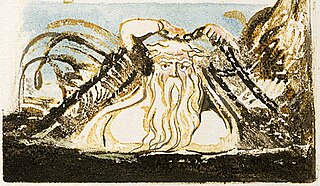
"The Human Abstract" is a poem written by the English poet William Blake. It was published as part of his collection Songs of Experience in 1794. The poem was originally drafted in Blake's notebook and was later revised for as part of publication in Songs of Experience. Critics of the poem have noted it as demonstrative of Blake's metaphysical poetry and its emphasis on the tension between the human and the divine.
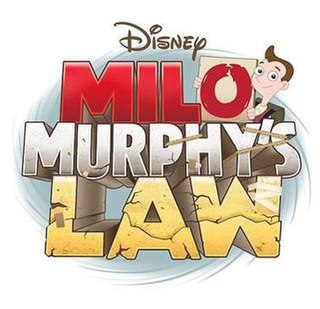
Milo Murphy's Law is an American animated comedy television series created by Dan Povenmire and Jeff "Swampy" Marsh for Disney Channel and Disney XD. The series premiered on October 3, 2016, on Disney XD. It revolves around the title character, Milo Murphy, who is a descendant of the “Original Murphy” of Murphy’s law, which states that anything that can go wrong will go wrong. The series takes place in the same universe as Povenmire and Marsh's previous series Phineas and Ferb, with multiple references to the show occurring across season one, culminating in a crossover at the beginning of the second season and continuing throughout with other plot threads from the former series.















